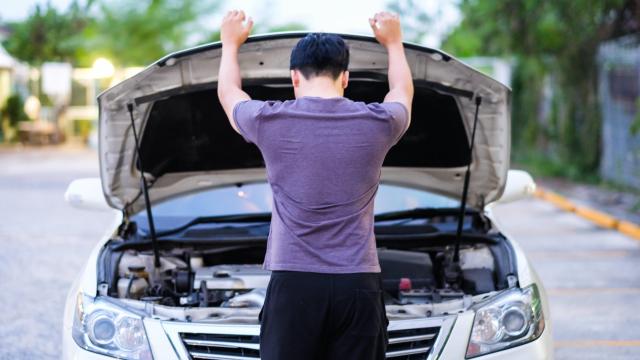When buying a new car, it can be easy to get caught up in all the special features and amenities, or mentally calculating how much money you’re going to save, thanks to the vehicle’s superior gas mileage. But over time, both the excitement and that new-car smell wears off, and the most important feature becomes whether it’ll get you from point A to point B safely.
This is something that experts at Consumer Reports (CR) have been taking into consideration since 1952 — the year the magazine published its first reliability report on cars from most major manufacturers sold in the United States at the time. In the process of collecting the data for this report, the CR team learns a lot about makes certain vehicles more — and less — reliable than others. Here are some of the signs that your car might not be as reliable as you think it is.
Signs that your car may be unreliable
When the CR team investigates a vehicle’s reliability, those that have issues in 17 specific aspects and areas in their first three years have more of a chance of encountering serious problems later on. In other words, even if your car is running well at first, be on the lookout for trouble in these parts and systems. Here are the top 10 from the list Jon Linkov and Steven Elek compiled for CR, in order of seriousness:
- Engine (major problems): Engine rebuild or replacement, cylinder head, head gasket, turbocharger or supercharger, timing chain or belt.
- Engine (minor problems): Accessory belts and pulleys, engine computer, engine mounts, engine knock or ping, difficulty filling up gas tank, fuel leaks, oil leaks.
- Engine cooling: Radiator, cooling fan, water pump, thermostat, antifreeze leaks, overheating.
- Transmission (major problems): Transmission rebuild or replacement, torque converter, premature clutch replacement.
- Transmission (minor problems): Gear selector and linkage, transmission computer, transmission sensor or solenoid, clutch adjustment, rough shifting, slipping transmission, leaks.
- Drive system: Driveshaft or axle, CV joint, differential, transfer case, four-wheel-drive/all-wheel-drive components, driveline vibration, electrical failure, traction control, electronic stability control (ESC).
- Fuel system/emissions: Sensors (O2 or oxygen sensor), emission-control devices (includes EGR), fuel-injection system, fuel gauge/sender, fuel pump.
- Electrical systems: Alternator, starter, hybrid/electric battery replacement, hybrid/electric-battery-related systems, regular battery, battery cables, engine harness, coil, ignition switch, electronic ignition, spark plugs and wires failure.
- Climate system: AC compressor, blower (fan) motor, condenser, evaporator, heater system, automatic climate system, electrical failure, refrigerant leakage.
- Suspension/steering: Shocks or struts, ball joints, tie rods, wheel bearings, alignment, steering linkage (includes rack and pinion), power steering (pumps and hoses, leaks), wheel balance, springs or torsion bars, bushings, electronic or air suspension.
Of course, this is a general list, and your experience with your own vehicle may differ. But if any of these problems (or the other seven on the CR list) start early and/or become routine, it’s a good idea to look into it sooner rather than being stuck on the side of the road later.

Leave a Reply
You must be logged in to post a comment.